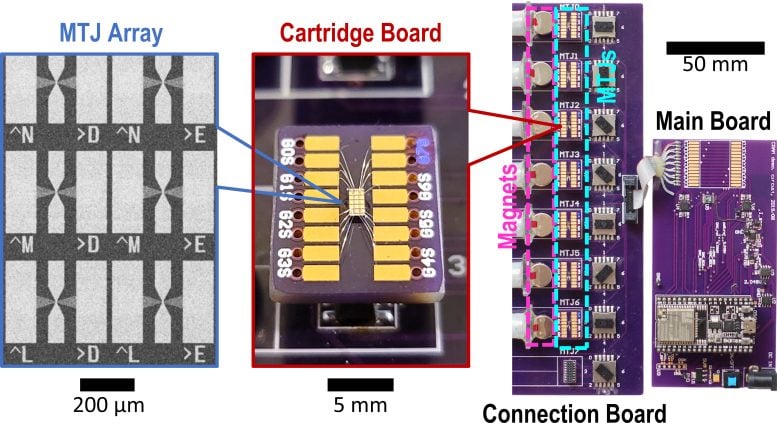The University of Minnesota researchers have introduced a hardware innovation called CRAM, reducing AI energy use by up to 2,500 times by processing data within memory, promising significant advancements in AI efficiency.
This device could slash artificial intelligence energy consumption by at least 1,000 times.
Researchers in engineering at the University of Minnesota Twin Cities have developed an advanced hardware device that could decrease energy use in 
A custom-built hardware device plans to help artificial intelligence be more energy efficient. Credit: University of Minnesota Twin Cities
The International Energy Agency (IEA) issued a global energy use forecast in March of 2024, forecasting that energy consumption for AI is likely to double from 460 terawatt-hours (TWh) in 2022 to 1,000 TWh in 2026. This is roughly equivalent to the electricity consumption of the entire country of Japan.
According to the new paper’s authors, a CRAM-based DOI: 10.1038/s44335-024-00003-3
In addition to Lv, Wang, and Karpuzcu, the team included University of Minnesota Department of Electrical and Computer Engineering researchers Robert Bloom and Husrev Cilasun; Distinguished McKnight Professor and Robert and Marjorie Henle Chair Sachin Sapatnekar; and former postdoctoral researchers Brandon Zink, Zamshed Chowdhury, and Salonik Resch; along with researchers from Arizona University: Pravin Khanal, Ali Habiboglu, and Professor Weigang Wang
This work was supported by grants from the U.S. Defense Advanced Research Projects Agency (





















Discussion about this post